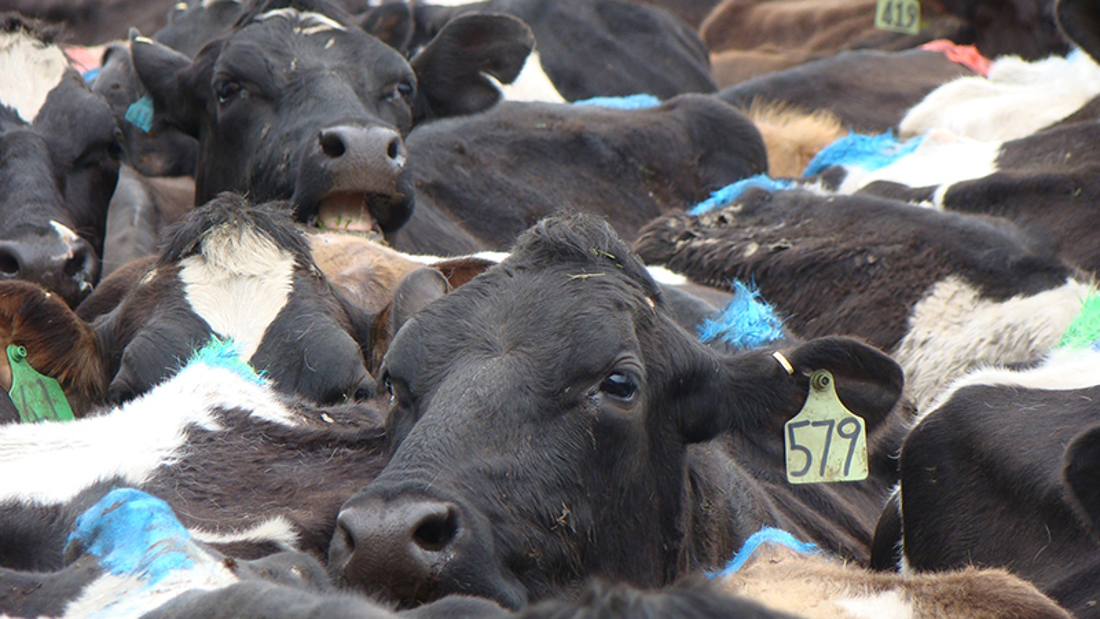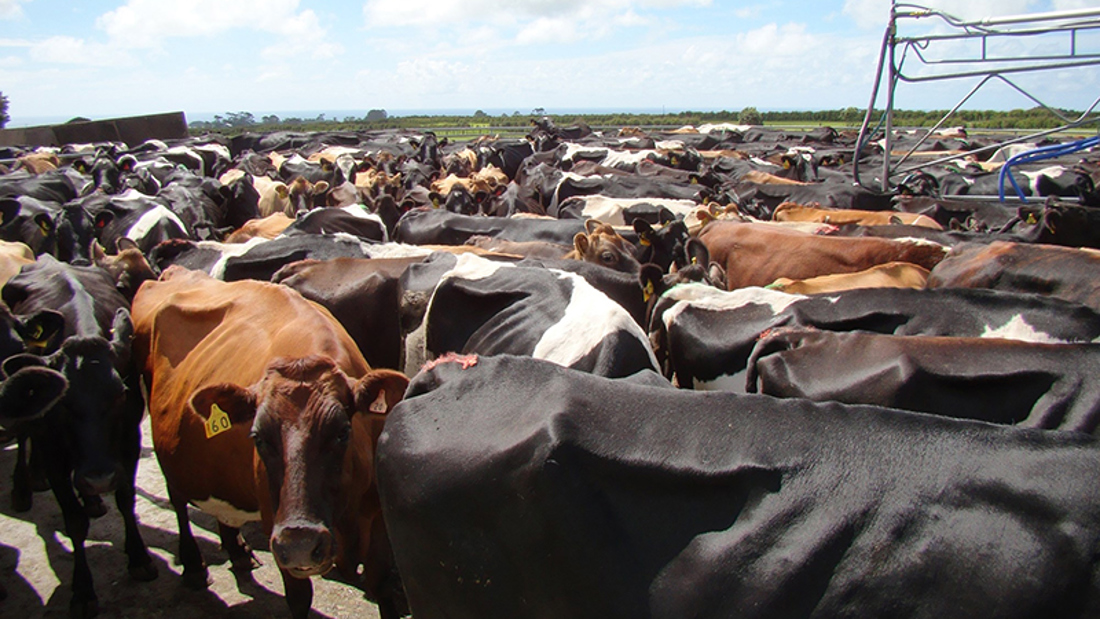Enhancing milk let-down
5 min read
The milk letdown reflex in cows stimulates milk flow from the alveoli in the udder into the teat canal. It has to occur before a cow will milk out freely. The benefits of ensuring milk letdown has occurred include improved milking efficiency and maximised milk production.
Here you will find information to help you understand more about encouraging milk flow, identifying issues that may be causing interrupted milk letdown, techniques to promote calmer cows and creating ideal dairy environments.
An understanding of how milk letdown occurs will help milkers manage the milking process in a way which encourages it. Cows that letdown just prior to cup attachment will milk out more completely. Milk is initially secreted into small sacs within the mammary gland called alveoli, it is from here that it is ejected for consumption or harvesting.
Mammary alveoli are surrounded by smooth muscle cells which are a prominent target cell for oxytocin. Oxytocin stimulates contraction of these cells, causing milk to be ejected into the ducts and cisterns above the teat.
 Oxytocin is released after the cow receives an appropriate stimulus - this can be visual, aural or physical, and should be predictable and consistent at every milking. Handling/massage of the teats for at least 15sec is a strong stimulus, but cows can also learn to letdown through the association of the dairy environment to the milking process.
Oxytocin is released after the cow receives an appropriate stimulus - this can be visual, aural or physical, and should be predictable and consistent at every milking. Handling/massage of the teats for at least 15sec is a strong stimulus, but cows can also learn to letdown through the association of the dairy environment to the milking process.
The pressure of milk being forced into the ducts/cistern and down towards the teat causes the teat to swell with milk and become ‘plump’. It takes 60 - 90 seconds for teats to become plump after letdown has been initiated. Cows with well-filled udders require a shorter period of stimulation to elicit a milk letdown response than cows with less-filled udders.
The action of oxytocin is essential for emptying of the udder during milking. As much as 80% of a cow’s milk is unavailable if this oxytocin release is insufficient or does not occur.
Its letdown action lasts for about 5 minutes and is strongest for the first 3 minutes of milking. It is important to get the cups attached quickly after letdown has started to make full use of the increased udder pressure that occurs.
Slow milking time and incomplete milking out are indicators of interrupted milk letdown. If any of the following are occurring, then your cow may have a milk letdown problem:

Avoiding the following stressful situations will help ensure good milk letdown.
Fear causes the release of the hormone adrenaline into the blood stream causing a ‘fight or flight’ response.
Adrenaline primes the body for action by increasing the heart rate and blood flow to the muscles. It also blocks the action of the milk letdown hormone oxytocin. This effect can last up to 30 minutes from a single release of adrenaline.
There are a number of factors that provoke fear in cows including: fear of heights; sudden movements and noises; threatening or aggressive actions; prolonged eye contact; and large or towering objects. Fear responses should be minimised by appropriate handling behaviour and good dairy design.
The effects of fear can have a significant impact on the efficiency and productivity of the milk harvesting system and result in the following,
Address welfare issues. Pain, stress and fear are all animal welfare issues and need to be avoided if possible. Not only are they ethically unacceptable, but also there are local community and international market expectations to meet.
Good dairy stockmanship not only improves animal health, milk letdown and production, it helps ensure a safe and efficient work environment for the whole team.
Cows have good short-term and long-term memories and will readily learn a variety of tasks. This characteristic is one reason why cattle respond well to consistent handling routines.
Strong physical or emotional experiences (good food, fear, pain) are likely to result in long lasting memories. Cattle learn to associate people or locations with rewarding or negative experiences.

The dairy needs a good entry, exit and platform to ensure smooth access and no surprises.
Eliminate all factors that could cause cows to shy away from the dairy entry or exit such as:
Learn about cow behaviour to help you understand how the handling of cows can affect their willingness to enter the dairy.
Observe cows during a milking to see if platform design, including pipework and layout, encourages good cow flow on entry and exit.

Cows are feeling stressed due to being packed too tightly.

Cows with enough space to be relaxed.
Creating a good environment in the dairy is key to an efficient milking.
The advantages of a good and safe dairy environment include:
Cows are creatures of habit and they respond better if they have a routine that is consistent and predictable. While an unfamiliar feature of the dairy may initially provoke moderate fear, cows will learn to become familiar with that feature over time. If factors are constantly changing, a cow will not be able to adjust and the cow's sensitivity will be heightened, making the cow overly fearful of people or particular location or physical structure.
Now’s the perfect time to check in, plan, and set up for a strong season. We’ve pulled together smart tips and tools to help you stay ahead all winter long.
Whether you prefer to read, listen, or download handy guides, we’ve got you covered with trusted tools to support your journey every step of the way.
Put our proven strategies and seasonal tools to work. Boost production, support animal health and watch your profits hum.
Tools that are backed by science, shaped by farmers and made for this season.
That’s Summer Smarts.